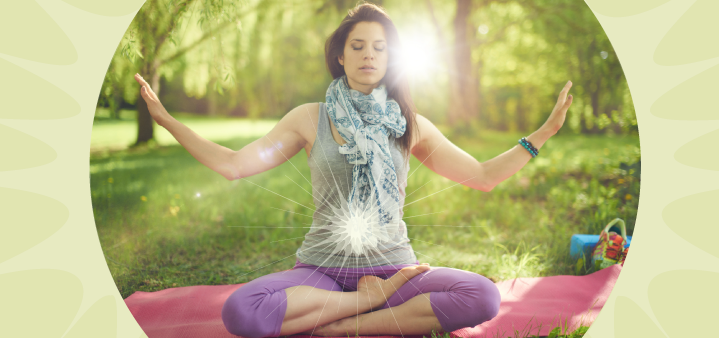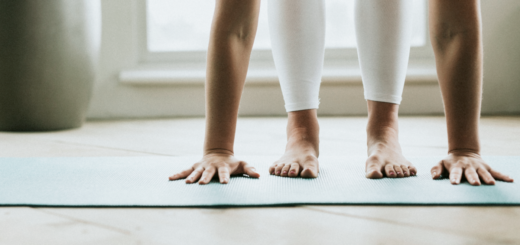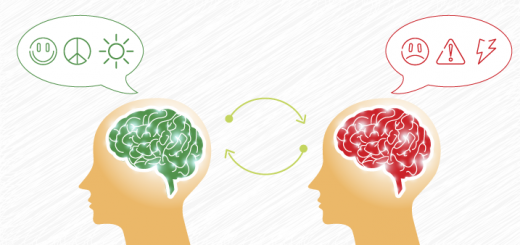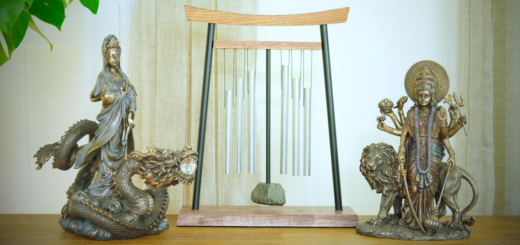Three stages of working with chakras
7At the beginning of my yoga studies many years ago I was fascinated by a yoga book that gave a list of yoga poses for each chakra. It seemed so easy – just do those poses and all your chakras will be in harmony! As I became more experienced as a teacher and practitioner, I realized that those specific poses only work if you bring your attention to the area that they are supposed to target. In other words, it is not about individual poses per se, but where you choose to place your attention. The yoga tradition says that energy follows attention. Chakras are clusters of beliefs around specific needs we all have that are mapped symbolically in the human body. So by bringing attention to a specific body area and working with it, you can change your beliefs and meet your needs.
Here are the three stages of working with chakras:
Stage 1: Reflect on where you stand at the level of each chakra.
Before you can change anything, you need to figure out where you are. You can approach this investigation systematically, from the ground up, exploring each chakra and the beliefs you have associated with it (it can become a wonderful extended exploration in your home yoga practice – be sure to keep track of what you discover via journaling). Or you can focus on the one that is associated with the most pressing issue right now and go from there. Whichever method you choose, make time and create space to focus on it. You can do it in one of three main ways:
- Meditate. Begin your practice by doing some focusing movement and breath (here is an example), and then sit still and reflect on a specific situation, or action, or concept. For example, you can use the “Alter Ego” meditation: Sit comfortably, close your eyes and envision a mirror image of yourself sitting across from you. Explain the issue that you are dealing with to your alter ego, being as detailed and honest as you can. And then imagine what you alter ego would say. Simply listen for the response and see if any insights emerge.
- Journal. Pose a question and then explore it in writing. For example, you can write “I am feeling rather edgy lately and easily irritated – what is this about? Anger is usually connected to the third chakra – the center of self-confidence and achievement. Am I having trouble with that?” And continue to write whatever comes.
- Discuss (with a friend, relative, therapist, support group, etc.) Pick a person who is good at listening and asking relevant questions. Establish from the start that you are not looking for advice and just need a friendly ear. Often just hearing yourself talk about an issue can have a clarifying effect. Be sure to trade favors and take your turn to listen next time.
Don’t get stuck in this phase, otherwise you might end up spinning in circles. The most important (and challenging) part of this stage is to avoid obsessing about “Why?” You may never know. There is no absolute truth here, just contributing factors and your current point of view. Your goal is to vent out, identify patterns of behavior that are not serving you well and then move on to Stage 2.
Stage 2. Replace the qualities or behaviors that you are not fond of with the ones you would like to cultivate.
Symbolism works great here. Use relevant and meaningful imagery of focusing devices: elements, senses, animals, deities, gestures – what qualities do you associate with them that you would like to possess? For example, you can use the image of a mountain to symbolize stability, the image of an eagle to enable yourself to see a bigger picture, the image of water to cultivate the feeling of fluidity, and so on. Use the image associated with each chakra to cultivate your desired qualities. Some images will work better for you then others and this is perfectly fine. Pick the ones that you can connect to. Imagine taking on those qualities through your yoga practice, integrating them into your sense of self – this is the essence of chakra work.
Stage 3. Act is if you possess those qualities already (“fake it till you make it”).
James Clear, an author who studies effective habits, writes: “Your current behaviors are simply a reflection of your current identity. What you do now is a mirror image of the type of person you believe that you are (either consciously or subconsciously).“ It is easier to change your actions if you connect your desired quality to the way you want to see yourself. To do that, you need to first decide on the kind of person you want to be (like you did in Step 1), and then take small specific steps to confirm this new identity.
For example, you decide that you want to be more grounded and focused at work. Then start your day with deep abdominal breathing and visualize yourself as a sturdy mountain that sits quietly and majestically, no matter what chaos takes place at its base. From that perspective, go mentally through the tasks to be completed. Every time you do that, you will confirm to yourself that you are the kind of person who acts from a place of steadiness and calm.
Or, let’s say you decide that you want to be a more inspired and inspirational yoga teacher. Then commit to doing 20 minutes of personal yoga practice every day exploring your own challenges, and reading 20 minutes of yoga-related writing from people that inspire you. Every time you do that, you will reinforce your identity of someone who gets inspired by yoga.
So meaningful chakra work is not just about doing poses that target certain body areas. It is about directing your energy, both physical and mental, to facilitate meaningful change at the level of your deepest beliefs about yourself and the world.
Next time we will feature a short simple yoga practice that uses the image of a mountain to evoke the feeling of stability and calm, and the week after we will present a much more complex and multilayered practice to embody the quality of fierceness. Tune in!
[jetpack_subscription_form]





















Thank you for making Chakra study clearer! I’m going to use these suggestions for personal practice. Looking forward to your next posts for further study!?
That’s great Chris! Let me know how it goes.
Olga thank you once again for clarity. I have taught a “poses for chakras” series, always including some kind of breath, visualization or sound…but this takes it all to a whole other level. Thank you for your good works that you share so freely. I am taking my second course with you now on YouU.
So happy to hear that you integrate breath, images and sound with your chakra work, Carol! It makes it so much more potent. And excited to hear that you are taking my YogaU course, thank you! It gets me so excited to teach it 🙂 Hope it’s useful.
Excellent article! Thanks so much!
Well written. Thank you for your clarity.
Thanks so much for this! I am new to Chakras and learning so much. I have been researching alot because I am working through a blocked throat chakra right now as I am suffering from bad pubic speaking anxiety. Sites like this and https://activatemychakras.com/how-to-activate-your-chakras/ are really, really helping me.
I swear my life has been so much better since discovering chakras and I dont know what I ever did without mediation!